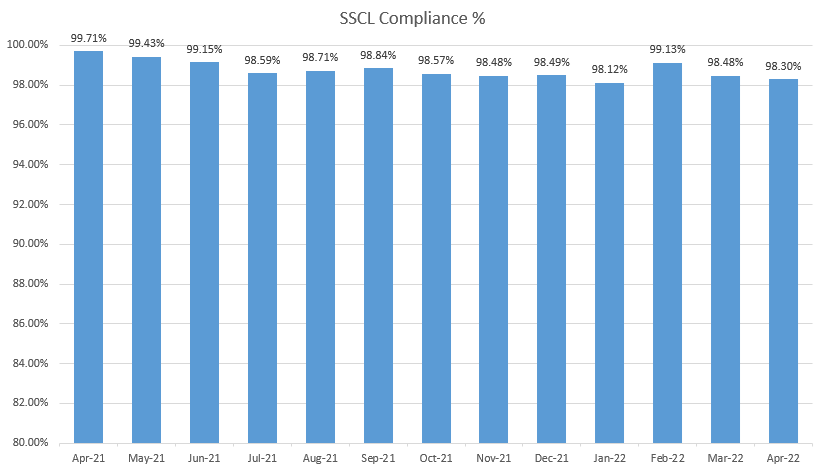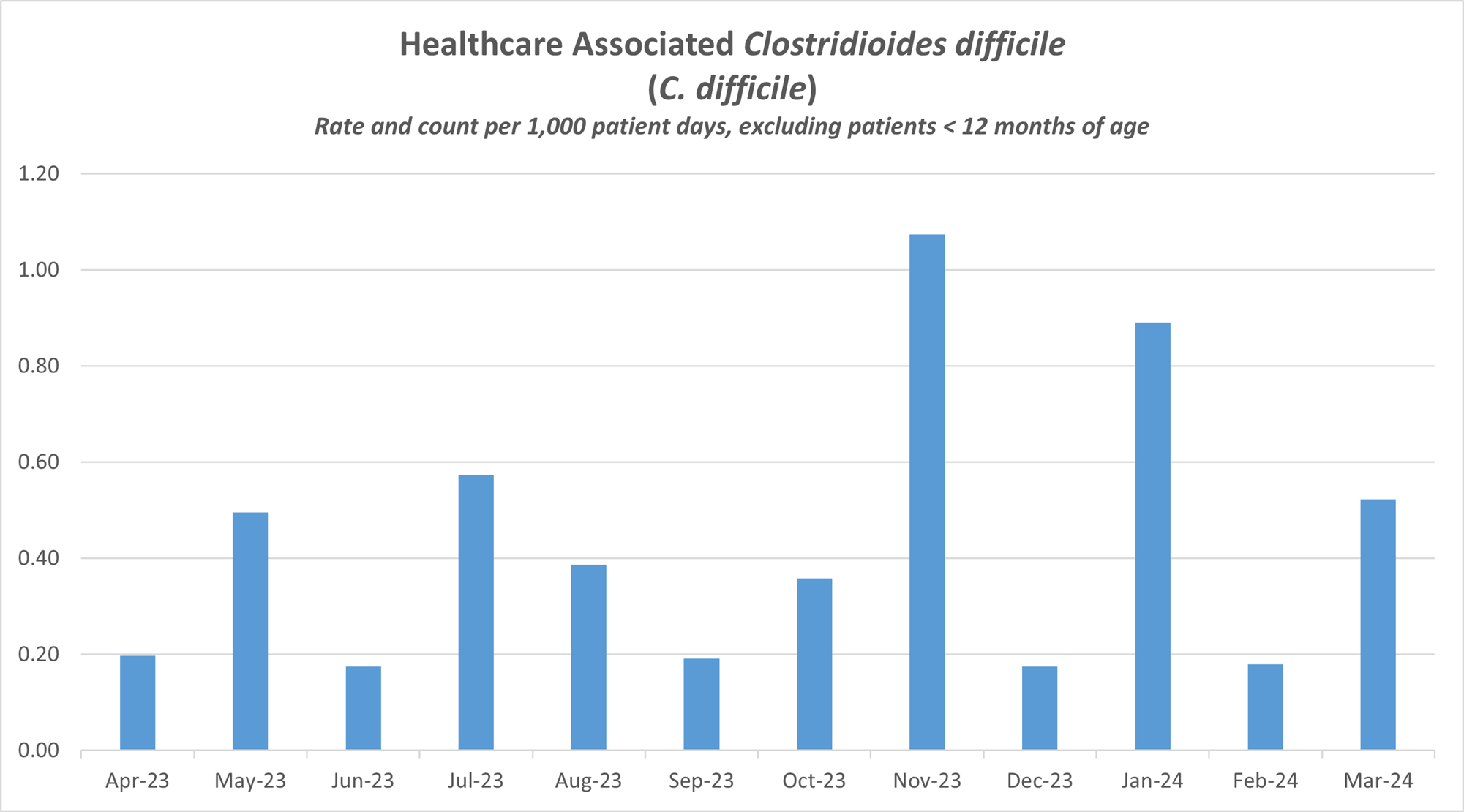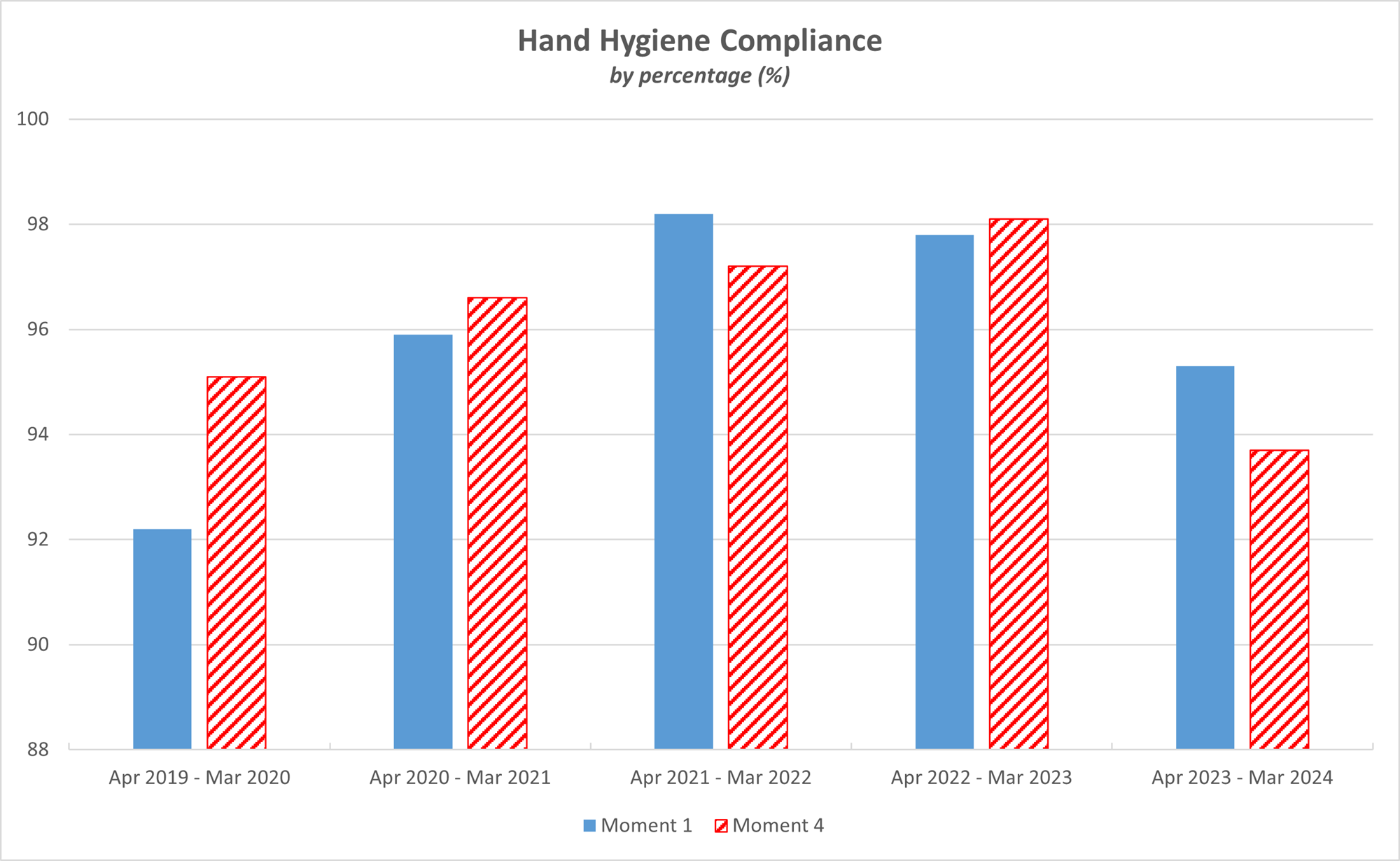Patient Safety Indicators
At SickKids, the safety of patients, staff and visitors is a priority. We believe that reporting on patient safety indicators is an important and positive step in creating a better SickKids and strengthens confidence in our hospitals.
Eight patient safety indicators related to infection prevention and control and surgical safety are listed on this site. Posting our patient safety indicators allows us to an opportunity to inspire improved performance and reduce the number of health-care associated infections and enhance surgical safety.
We have a number of practices in place at SickKids to help prevent and control infections. As a parent or visitor to the Hospital, the two most important things that you can do are to stay away from the Hospital if you are sick; and wash your hands with an alcohol-based sanitizer before and after entering the Hospital and before and after entering a patient’s room.
SickKids leadership encourages our health-care professionals to point out anything they feel could pose a problem or safety concern, even before it occurs. The Hospital routinely reviews any information our teams provide, to learn from and improve our working environment. In this way we are constantly surveying, reviewing, and modifying our processes to ensure the safest possible surgical experience for you and your child. Learn more about Patient Safety Indicator reporting.
Patient safety indicator reports
Hospitals that have an intensive care unit (ICU) with patients over the age of 18 are required by the Ministry of Health and Long-Term Care (MOHLTC) to publicly report their Ventilator Associated Pneumonia (VAP) cases and rates per 1,000 ventilator days. SickKids has an ICU but does not have patients over 18 years of age and is, therefore, considered “ineligible” to publicly report this information.
However, SickKids remains committed to ensuring the utmost quality of care and patient safety. Internally we monitor our VAP cases and rates per 1,000 ventilator days and use this data to monitor our performance. Additionally, this data is reported to the MOHLTC.
Hospitals that perform hip and/or knee joint replacement surgeries on patients over the age of 18 are required by the Ministry of Health and Long-Term Care (MOHLTC) to publicly report their surgical site infection (SSI) prevention percentages. SickKids does not do these surgeries on patients over 18 years of age and is, therefore, considered “ineligible” to publicly report this information.
However, SickKids remains committed to ensuring the utmost quality of care and patient safety. Internally we monitor our SSI cases and and use this data to monitor our performance.
The surgical safety checklist (SSCL) is a patient safety communication tool that is used by a team of operating room professionals (nurses, surgeons, anesthesiologists, and others) to discuss important details about each surgical case. In many ways, the surgical checklist is similar to an airline pilot’s checklist used just before take off. It is a final check prior to surgery, and is used to make sure everyone knows the important medical information they need to know about the patient, all equipment is available and in working order, and that everyone is ready to proceed.
SickKids implemented and began capturing our SSCL compliance in May 2010. The surgical safety checklist is considered “performed” when the designated checklist coordinator confirms that surgical team members have implemented and/or addressed all of the necessary tasks and items in each of the three phases: Briefing, Time Out and Debriefing. Therefore, the SSCL compliance indicator is a process measure, measuring the degree to which all three phases of the SSCL was performed correctly and appropriately for each surgical patient.

The per cent compliance is calculated as follows:
Number of times all three phases of the surgical safety checklist was performed ÷ by total surgeries x 100 = percentage compliance
Examples of checklist items
Briefing phase:
- Verify the patient name and procedure to be done
- Allergy check
- Medication check
- Operation site, side and procedure
- Lab tests, X-rays
"Time out" phase:
- Patient position
- Operation site and side and procedure
- Antibiotics check
Debriefing phase:
- Surgeon reviews any important items arising from the case
- Anesthesiologist reviews any important items arising from the case
- Nurse reviews correct counts and any important items arising from the case
If you or your child undergo a surgery at SickKids, you can expect that the surgical safety checklist will be used as part of the procedure. It will be used by your health-care team before, during and after your surgery to help the health-care team familiarize themselves with your medical history and any special requirements that may be needed for your individual case.
Methicillin-Resistant Staphylococcus aureus (MRSA) and Vancomycin Resistant Enterococcus (VRE) are relatively less common organisms in paediatric populations compared to adult populations. This provides SickKids with an opportunity to carefully analyze each case to determine whether an improvement in practice is required.
Methicillin-Resistant Staphylococcus aureus
Rate and count per 1,000 patient days
|
Apr - Jun 2023 |
Jul - Sept 2023 |
Oct - Dec 2023 |
Jan - Mar 2024 |
|
|---|---|---|---|---|
|
Rate |
0.04 | 0.00 | 0.00 | 0.04 |
|
Count |
1 | 0 | 0 | 1 |
Vancomycin-Resistant Enteroccocci (VRE)
Rate and count per 1,000 patient days
|
|
Apr - Jun 2023 |
Jul - Sept 2023 |
Oct - Dec 2023 |
Jan - Mar 2024 |
|---|---|---|---|---|
|
Rate |
0 | 0 | 0 | 0 |
|
Count |
0 | 0 | 0 | 0 |
Clostridium difficile (C. difficile) infections in children differ in a number of ways from those in adults. SickKids takes those differences into account when we carefully analyze monthly rates and individual cases of C. difficile to determine the most appropriate, evidence-based improvement strategies.

|
|
Rate |
Count |
| April 2023 | 0.20 | 1 |
| May 2023 | 0.50 | 3 |
| June 2023 | 0.17 | 1 |
| July 2023 | 0.57 | 3 |
| August 2023 | 0.39 | 2 |
| September 2023 | 0.19 | 1 |
| October 2023 | 0.36 | 2 |
| November 2023 | 1.07 | 6 |
| December 2023 | 0.17 | 1 |
| January 2024 | 0.89 | 5 |
| February 2024 | 0.18 | 1 |
| March 2024 | 0.52 | 3 |
Information about C. difficile in children
Clostridium difficile (C. difficile) disease (CDAD = stands for C. difficile associated diarrhea) is generally associated with hospitalization and antibiotic therapy. It is not as common in children as it is in adults. It can occur weeks after discharge from hospital or after stopping antibiotic therapy.
Severe cases in children are more likely to occur in certain groups:
- Severely immunocompromised patients (for example, those with leukemia)
- Patients with underlying bowel disease
Factors that increase the risk of contracting include:
- Prolonged hospitalization
- Having an infected roommate
- Having symptomatic infected patients on the same ward
What we do at SickKids to prevent C. difficile infections
- Promote hand hygiene and work hard to provide clean environments to prevent infection all the time
- Monitor closely for new cases and watch for signs of transmission among patients
- Implement control measures (use of single rooms, careful hand hygiene, gowning, use of gloves, enhanced environmental cleaning) at the first sign of symptoms. The precautions continue until patients are no longer infectious
- Educate health-care and housekeeping staff in hospital
- Use — and counsel use of — antibiotics carefully
The Canadian Institute for Health Information (CIHI) has calculated the Hospital Standardized Mortality Ratio (HSMR) for eligible acute care hospitals in Canada (excluding Quebec). HSMR is a “Big Dot” indicator and measurement tool that compares a hospitals’ mortality rate with the overall average rate. It has been used by hospitals in many jurisdictions to assess and analyze mortality, and to identify areas for improvement. Paediatric and specialty hospitals are not included due to the specialized nature of their patient populations. Learn more about HSMR.
SickKids has a comprehensive, evidence-based hand hygiene program in place. We study the practice of staff through direct observation on different units at different times of the day to better understand when and where improvements are required. We follow the practice and observation guidelines established by the Ontario Ministry of Health and Long-term Care. Learn more about the Ontario Ministry of Health and Long-Term Care’s “Just clean your hands” campaign.

|
Per cent compliance before initial patient/patient environment contact (Moment 1) |
Per cent compliance for after patient/patient environment contact (Moment 4) |
|
| Apr. 2019 — Mar. 2020 | 92.2 | 95.1 |
| Apr. 2020 — Mar. 2021 | 95.9 | 96.6 |
| Apr. 2021 — Mar. 2022 | 98.2 | 97.2 |
| Apr. 2022 — Mar. 2023 | 97.8 | 98.1 |
| Apr. 2023 — Mar. 2024 | 95.3 | 93.7 |
Hospitals that have an intensive care unit (ICU) with patients over the age of 18 are required by the Ministry of Health and Long-Term Care (MOHLTC) to publicly report their central line infections (CLI) cases and rates per 1,000 central line days. SickKids has an ICU but does not have patients over 18 years of age and is, therefore, considered “ineligible” to publicly report this information.
However, SickKids remains committed to ensuring the utmost quality of care and patient safety. Internally we monitor our CLI cases and rates per 1,000 central line days and use this data to monitor our performance. Additionally, this data is reported to the MOHLTC. Reducing CLI is a key focus of Caring Safely.

